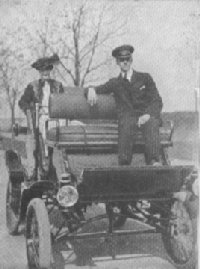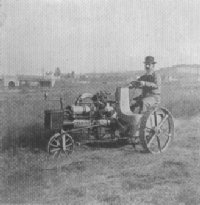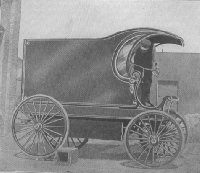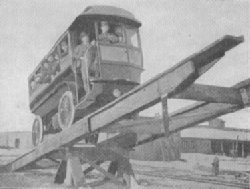|
The age has arrived when the horse as a means of power for general traction is well on the wane. While it is not intended by this statement to convey the idea that the time will come when horses will no longer be used to draw vehicles, nevertheless the development in the past decade of the automobile, or automatic vehicle, has attained such success that it is no longer a mere experiment. Today, upon the streets of any of our cities may be seen horseless carriages, trucks, wagons and fire engines, while in the country the traction engine and the automatic plow are gradually coming into use.
The principal motive powers for the motor vehicle to-day are electricity, gasoline and steam, although there are several chemical and other agents, such as compressed air, which are in occasional use. In general, however, it may be stated that the last named have been dropped. The relative merits of the three systems now generally in use may be summarized as follows: The greatest difficulty that is presented in the problem of driving a carriage by electricity is that of the storage battery. For many years a great number of scientists have busied themselves striving after improvements in the method of storing electricity. The result of these experiments has shown that weight is a serious handicap. Nevertheless, so convenient is the electrical method that the electric motor probably is the most successful, in its partlicular sphere, now in use on automobiles. The mechanical arrangement of the average electric automobile consists of a battery or series of batteries, in which is stored sufficient electrical fluid to serve for a several hours' run. These storage batteries must be filled at some power station when run down, an operation that takes some time. It is customary in the large cities, on automatic "bus" lines, to have a wire connection at the regular station of the "bus", whereby the batteries may be kept constantly supplied. From the storage batteries run connecting wires to a motor usually located on the rear axle of the vehicle, or in the hubs of the rear wheels. By the ordinary method of levers, the power is imparted to the motor, or thrown off at will. Very effective brakes, of necessity, make up a part of the complete automobile. The best equipped machines can come to a full stop from a high rate of speed in a very few feet. The steering gear is usually attached to the front wheels, and is operated by a horizontal lever near the front seat However, some cabs steer by the rear wheels. The most up-to-date machines are equipped with electric lights and bells.
The steam machine is operated by a simple steam engine, the steam for which is generated by heat from oil or gasoline Among the chief points in favor of this method are its comparative freedom from vibration or jar, its comparatively noiseless operation, and the universal knowledge of its propelling power. This vehicle is equipped with a burner, a boiler, cylinders and a chain connecting the fly wheel with one of the axles of the wagon. As in the gasoline method, fuel for trips of over a hundred miles can be carried easily.
Motive power for farm purposes is receiving more and more attention. The latest departure is an automobile mower which is just being put on the market by the Deering Harvester Company of Chicago, or, to be more accurate, the International Harvester Company, of which the Deering is now a part. Their experiments began in 1894 and they succeeded in getting one of the machines ready for exhibition at the Paris Exposition, where it attracted much attention. In competition it worked perfectly, running at any speed and turning even more easily than a team of horses. The mower is equipped with ball and roller bearings and is propelled by a motor which consists of two six-horse power gasoline engines mounted tandem on a large pipe six inches in diameter and five feet long. The rear end of this pipe is secured to the mower frame in the place of the ordinary draft tongue and the front end is supported by a steering wheel. The machine is guided by the wheel which the operator holds in his left hand. The levers at his right are for operating the cutting bar. Although this motor is designed for the mowing machine it can be used for other purposes. By taking off the cutting apparatus it can be made to draw loads, grind feed, pump water and do many other useful things. MESSAGES WITHOUT WIRES |



